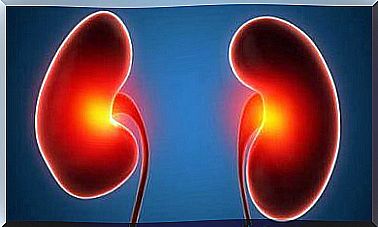Smoking Cessation: How To Handle Each Stage

According to the latest report from the World Health Organization on global trends in tobacco use, more than 1.3 million people are addicted to smoking. Health intervention in smoking cessation has therefore become the standard for preventive methods.
Data from the World Health Organization show that more than 8 million people die each year as a result of tobacco use. This number makes smoking the leading cause of preventable deaths and diseases worldwide. Health interventions are therefore crucial to ensure that people stop smoking.
For such an intervention to be effective, it must be able to deal with physical and psychological dependence on tobacco, break the automatism associated with smoking, and change the impact of the social environment on each person and their consumption. To do this, the first step is to recognize the stage that each smoker is at in the process of smoking cessation.
The stages of smoking cessation

When we talk about smoking cessation, we need to adhere to what is known as the transtheoretical model of behavior change. It is a model created in 1977 by the psychologists, Prochaska and DiClemente. It is used to understand and promote the process of changing a particular behavior.
It consists of six stages with very specific characteristics. It is based on the fact that a person does not necessarily have to go through all of them. Relapses are also taken into consideration. They are not seen as a failure, but as an opportunity to improve and increase the likelihood of success in a new attempt.
In that sense, the mission of health professionals will be to identify the stage of change that the smoker is at. Then they need to adapt the intervention to motivate the person to move forward in the process. They then dive deeper into each stage of smoking cessation.
The pre-consideration stage
At this stage, the person is still not aware of the problem of smoking even though they know that smoking is not a healthy habit. They therefore also do not recognize the need to quit smoking. In general, the people who are at this stage are the ones who go to consultations for other reasons. They may be doing so because they were pressured into doing so by family members.
At this point, the professional’s goal will be to make the client aware of the problem and understand the importance of stopping. To do this, it would be appropriate to assess how much they know about the risks of consuming tobacco and inform them accordingly. They must also emphasize the benefits they would be able to enjoy if they stopped.
The stage of consideration
At this stage, the client is aware that they have a problem and that they will have to stop smoking. Although it seems that they want to do it in less than six months, they still have mixed feelings about it. They do not know how to reach their goal.
In other words, even though they are aware of the problem, they have doubts about their ability to fix it.
At this point, the health professional will need to help the smoker with their ambivalence in order for them to be able to move forward in the smoking cessation process. To do this, it is essential to analyze and talk about the following aspects:
- The importance of quitting smoking.
- The belief that the smoker has in himself that they will achieve their goal. At this stage, it is fundamental to facilitate self-efficacy by helping the client remember their past successes.
- The risks associated with tobacco consumption and the reasons why the person wants to continue smoking.
- The benefits of stopping and the difficulty of achieving this goal.
Smoking cessation: The preparation stage

The preparation stage begins when the person is determined that they want to quit smoking. The person is convinced that they want to stop. They are willing to make a serious attempt within the coming month. Here the professional must:
- Congratulations client. Confirm them that smoking cessation is definitely the best decision they have ever made for their health and the health of the people around them.
- Choose a date when the person will no longer smoke. If the client has chosen a gradual reduction, they should start it earlier so that they can stop completely on the selected date.
- Encourage the client to communicate their decision to all their friends and family. The more people who know it, the better.
- Tell about the manifestation of possible difficulties (urge for things, irritability, anxiety, nervousness, fatigue, changes in sleep routines, increased appetite, constipation, headaches, difficulty concentrating and the negative impact on the social environment, among others). Then talk about useful strategies to limit them.
At this stage, the priority is to prepare the client to quit smoking. Here it is essential to get them to see the process in a positive way. They will also need to understand that they can quit smoking because they have the necessary strategies to successfully deal with every possible adversity.
The action stage during smoking cessation
By this time, the client has already stopped smoking and their primary goal is to avoid relapse. To do this, the healthcare professional must assess the difficulties that the client is facing and decide on the strategies that will be useful to effectively limit them.
In addition, it is important to keep in mind that relapse syndrome begins to disappear from the seventh day. The doctor will talk about the feeling of emptiness that occurs around the tenth day after stopping, and warn about the false sense of security that appears between days 15 and 30 after stopping.
Continue: Tobacco-free for six months

The maintenance stage begins when the person has not smoked for six months. However, they will not be seen as former smokers until they have been completely tobacco free for 12 months. At this stage, the healthcare professional should evaluate possible difficulties and decide the strategies to deal with them.
In addition, it may be helpful to help the patient remember why they stopped smoking. They should also review the benefits that have already been manifested and those that will come in the future. It may also be necessary to help the patient remember the disadvantages of using tobacco.
Smoking cessation: Relapse
This is a relapse when a client smokes again after being stopped.
At this point, it is important that the health professional shows empathy, provides support, refrains from punitive behaviors, and makes the client understand that relapse is an opportunity to learn and try again, as they will be more likely to get success.









